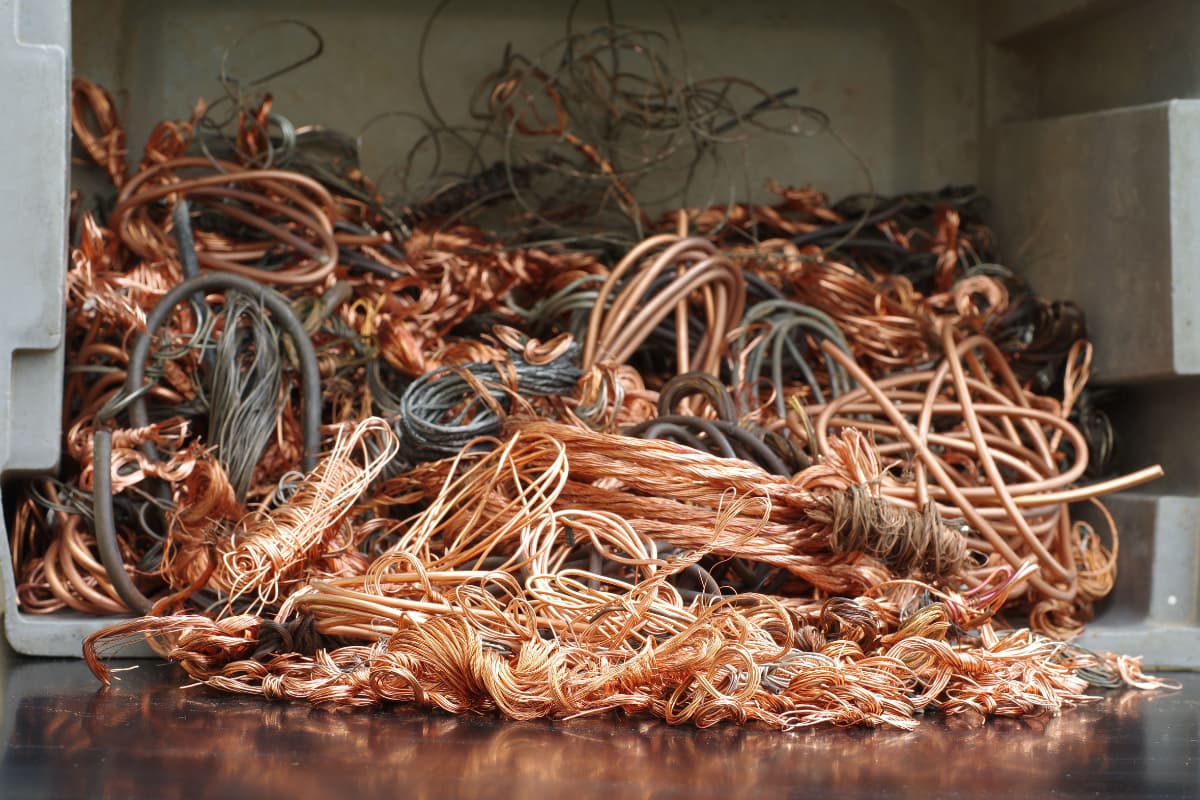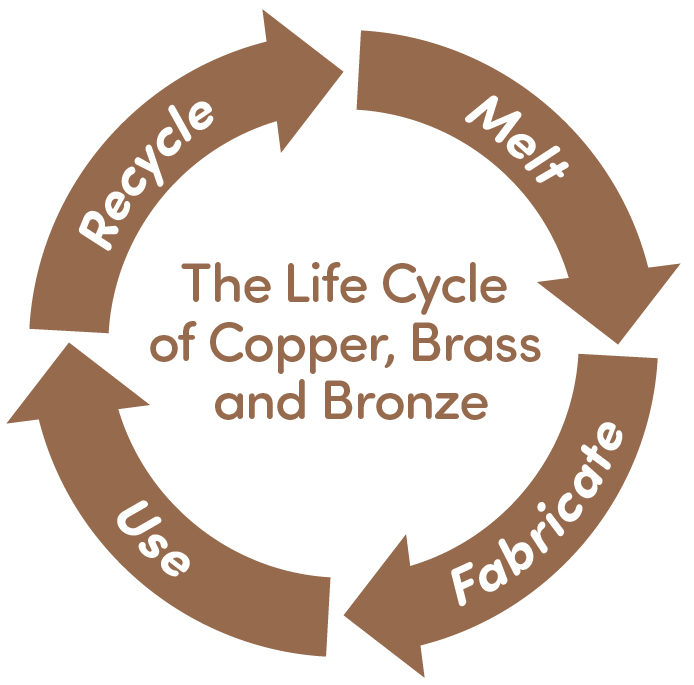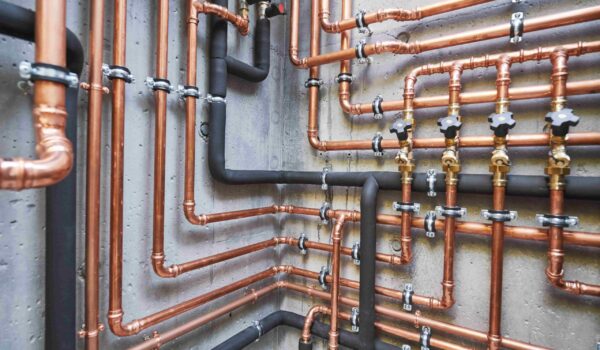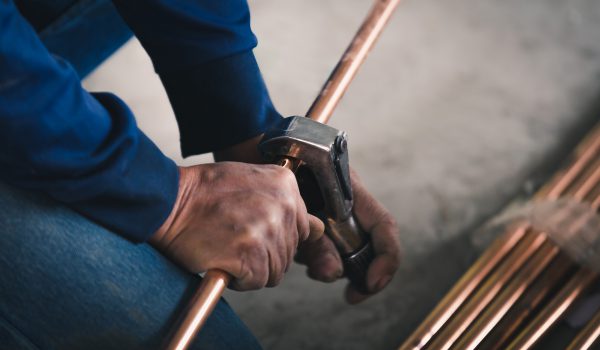To reduce waste and limit its impact on the environment, it’s vital that recyclable materials with proven sustainability credentials are used in product and building design wherever possible.
As a highly versatile and fully recyclable material, copper has a key part to play in the transition to a circular economy, providing an infinite supply of high-quality products for use across a wide range of industries.
Want to learn more about the role of copper recycling in shaping a sustainable future? Read on to find out how copper is recycled and uncover the unique factors that make the process more effective than recycling other materials.
The copper recycling process
Copper is known for having some of the highest recycling rates among metals, due in equal part to the ease with which scrap copper can be recovered from end-of-life products and the simplicity of the recycling process.
When a building is being readied for demolition, scrap copper can be collected from old pipework and other fixtures as part of the soft-stripping process. Another common source of scrap copper is disused electronic devices like mobile phones and laptops, which often have electrical copper wire.
All kinds of scrap copper – from pipes and wires to sheets and bearings – are sent to processing centres, where they are sorted based on grade. The scrap copper is then melted down into a liquid state, removing any impurities and creating molten copper ready for casting into ingots.
In most cases, the ingots are sold to manufacturers, where they then are rolled or extruded to make different products. These recycled copper products are finally sold onto suppliers and returned to the built environment, completing the cycle.

Learn more about the copper recycling process below.
How many times can copper be recycled?
What makes copper a truly circular and sustainable material is the fact that it can be recycled infinitely without any loss of quality, meaning the same piece of copper can be used again and again to make all sorts of different products.
During recycling, copper changes state from a solid to a liquid, however its molecular structure remains intact. As a result, copper retains its properties indefinitely, regardless of how many times it is recycled.
To date, at least 65% of all copper mined since 1900 is still in use. It’s estimated that approximately half of Europe’s demand for copper is currently being met by secondary supply of the metal, while around 30% of global demand is satisfied by recycled copper.
In 2020, The US Geological Survey estimated there were approximately 5.6 billion metric tonnes of copper in circulation worldwide – a quantity more than sufficient to meet both current and future demand, particularly as recycling rates increase.

Learn more about the circular economy below.
What are the benefits of copper recycling?
There are clear environmental and economic benefits to recycling copper. Not only does copper recycling use roughly just 15% of the energy required for mining and processing copper ore, but it is also believed to be around 13 times cheaper.
Because copper can be recycled infinitely without any alteration of its properties, recycled copper retains the same value as freshly mined copper, providing a continuous supply of the material for use across different industries.
Within the trades, scrap merchants, copper manufacturers and building suppliers have already established a resilient supply chain for the reuse and regeneration of scrap copper, reducing the need for primary production.
As one of the few truly circular and sustainable construction materials around, copper serves as an excellent alternative to single-use materials like plastic, which generate vast amounts of waste and harm the planet through pollution.

Learn more about the benefits of copper over plastic below.
Recycled copper: shaping a sustainable future
With a unique ability to be recycled infinitely and a well-established recycling infrastructure already in place, copper is rising to meet the growing demand for sustainability and circularity within the trades.
The impact of single-use materials is becoming a problem of increasing concern within the construction industry and can only be addressed by limiting their usage in favour of materials with truly sustainable properties.
As a highly versatile resource with a wide range of uses, copper stands ready to support the transition to a circular economy, helping to reduce waste and secure the best possible outcomes for the environment.
Want to learn more about the sustainable qualities of copper? Check out some of our other news items or subscribe to our newsletter!

